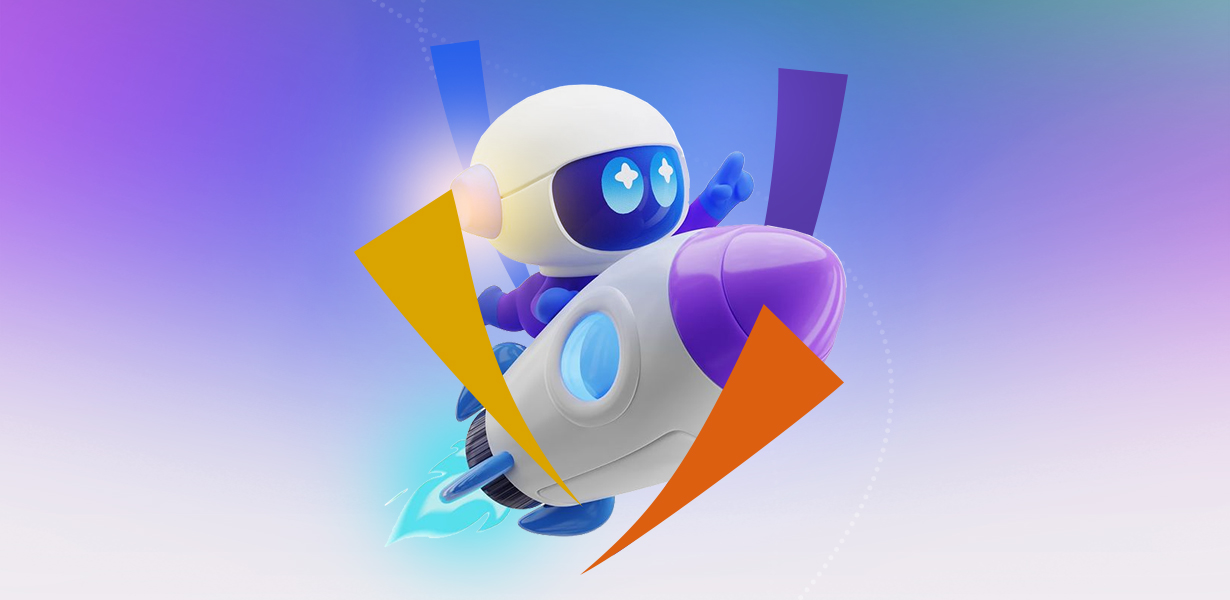The Future of Graphic Designing: Is AI a Challenge or an Opportunity?
Posted By
Tanveer Ahmad
Date
2025-03-05

AI in Graphic Designing: A Threat or a Tool?
AI-driven tools like Canva, Adobe Sensei, and Deep Art have revolutionized design processes. These tools can generate templates, automate tedious tasks, and even suggest design elements based on data-driven insights. While some argue that AI threatens the creativity and uniqueness of human designers, others believe it serves as an aid that enhances efficiency.
How AI is Changing Graphic Design
Graphic designing has always been a dynamic field, constantly evolving with technological advancements. From traditional sketching to digital tools like Photoshop and Illustrator, designers have embraced innovation to enhance creativity. But in recent years, Artificial Intelligence (AI) has emerged as a game-changer, raising a crucial question: Is AI making life difficult for graphic designers, or is it unlocking new opportunities?Automation of Repetitive Tasks
AI helps designers by automating tasks like background removal, color correction, and resizing, allowing them to focus on creativity rather than mundane tasks. This can significantly speed up the design workflow, allowing businesses to create high-quality content in less time.Smart Design Suggestions
Tools powered by AI analyze trends and user preferences to offer real-time design suggestions, speeding up the workflow and reducing trial-and-error. These AI-driven recommendations are based on large datasets, making them highly effective in predicting what might work best for specific audiences.Personalization & Customization
AI enables hyper-personalized designs based on user behavior, making marketing campaigns more effective and targeted. Brands can now create advertisements, website designs, and promotional materials tailored to individual users, enhancing engagement and conversion rates.Time & Cost Efficiency
AI significantly reduces the time required to complete projects, making it a cost-effective solution for businesses and freelance designers alike. Instead of spending hours on a single design, AI allows for quick modifications and adjustments, ensuring faster delivery.AI-Generated Art & Creativity Boost
AI is not just about efficiency; it also brings new creative possibilities. Tools like Deep Dream and MidJourney allow designers to experiment with unique, AI-generated art styles. These tools inspire fresh ideas and push the boundaries of traditional design concepts.
The Challenges AI Poses to Graphic Designers
Job Displacement Concerns
With AI tools providing easy-to-use design solutions, some businesses may rely less on human designers, leading to fewer job opportunities in entry-level roles. Clients who previously hired freelance designers for simple tasks may now turn to AI-based platforms for cost-effective solutions.
Creativity vs. Automation
AI lacks the human touch, emotional depth, and original creativity that define great design. While AI can replicate patterns, it cannot truly innovate. Many iconic designs are born out of human emotions, experiences, and cultural influences—areas where AI still falls short
Dependence on AI Tools
Over-reliance on AI-generated templates may lead to generic and repetitive designs, reducing originality in branding. Designers who solely depend on AI risk losing their personal creative identity and producing work that lacks a unique touch.
Ethical & Copyright Issues
AI-generated designs often raise questions about originality and intellectual property. Who owns an AI-created design? Is it truly unique, or is it derived from existing artwork? These concerns need to be addressed as AI continues to play a bigger role in the industry.
Quality Control & AI Limitations
While AI can generate impressive designs, it sometimes lacks the refinement and attention to detail that human designers provide. AI may create designs that look good on the surface but fail to align with the deeper brand message or purpose.
How Designers Can Stay Ahead of AI
Despite AI’s capabilities, human creativity remains irreplaceable. Here’s how designers can leverage AI while maintaining their edge:
Enhance Creativity:
Focus on conceptual design and storytelling—areas where AI struggles. A strong narrative, emotion-driven visuals, and cultural relevance make a design memorable.
Learn AI Tools:
Instead of fearing AI, designers should learn to use it effectively to enhance productivity. Understanding AI-powered platforms like Adobe Firefly, DALL·E, and Runway ML can give designers an edge over competitors.
Develop a Unique Style:
Having a distinctive personal style will make a designer’s work stand out from AI-generated content. Whether it’s a signature color scheme, illustration technique, or typography choice, uniqueness remains key.
Stay Updated:
Continuous learning and upgrading skills will ensure designers remain relevant in the evolving industry. Enrolling in courses on UI/UX design, branding, and motion graphics can add value to a designer’s portfolio.
Think Beyond Templates:
While AI can generate templates, it cannot replace strategic thinking. Designers should focus on conceptualizing campaigns, understanding client needs, and creating tailored visual identities.
Emphasize Human-Centric Design:
AI cannot fully grasp human psychology, cultural nuances, or emotional storytelling. Graphic designers who specialize in branding, user experience, and emotional design will always be in demand.
The Future of Graphic Design: A Collaboration Between AI & Designers
Rather than replacing designers, AI is expected to enhance their work. The future of graphic design will likely involve a hybrid approach, where AI handles repetitive tasks while designers focus on the artistic and strategic aspects. As AI tools improve, they will become valuable assistants, helping designers bring their creative visions to life faster and more efficiently. Many top companies already embrace AI-assisted design workflows. Brands like Nike and Coca-Cola use AI-powered tools to enhance their marketing strategies. However, the creative direction, brand storytelling, and final touches still require human intervention.
Conclusion
AI is not here to replace graphic designers but to complement their work. While AI-driven tools streamline design processes, they lack the emotional intelligence and creativity of human designers. The key to success in this AI-driven era is adaptation. Graphic designers who embrace AI as a tool rather than a threat will find themselves at the forefront of innovation, leveraging technology to push creative boundaries further than ever before. The future of graphic design is not about choosing between AI and human creativity—it’s about blending both to achieve the best results. By staying adaptable, innovative, and continuously improving their skills, designers can thrive in an AI-driven world and shape the future of visual storytelling.


